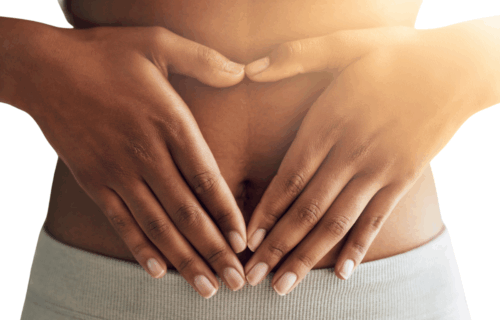
Mold Toxicity and Mold Symptoms in Kids: The Hidden Connection Parents Need to Know
Can mold affect a child’s behavior? Yes!
While that can also be true for adults, Mold Toxicity may look different in kids and grown-ups.
For starters mold symptoms may show up sooner in kids because they are smaller.
Kids also often show skin and behavior issues first. Whereas adults often start with sinus and gut issues. Notice we didn’t say ‘always’. It varies from person to person, and by mold type.
Does your child struggle with:
- Recurring skin problems
- Unexplained behavior changes
- Hyperactivity or lethargy
- Frequent infections that don’t seem to resolve
- Chronic respiratory issues – nasal congestion, shortness of breath, wheezing
- Allergy symptoms – watery eyes, itchy eyes, sneezing
- Food sensitivities
- Gut issues
- Symptoms nobody can explain
These seemingly unrelated health problems, and far more, can all point to one hidden culprit – Mold Toxicity.
Have you ever considered mold exposure as a root cause of illness before?
Symptoms can vary from different types of mold exposure, and from person to person.
And because the effects of mold exposure can vary so widely, many people spend years chasing symptoms and individual health issues before they hear about mold. But it’s the #1 underlying root cause of illness we see in the clinic.
Mold is the master masquerader. It shows up as gut issues, food sensitivities, immune issues, behavioral problems, and more.
And kids often have a difficult time communicating what’s going on.
What you will learn in this post:
- How mold symptoms can show up differently in kids vs adults
- Overlooked signs of mold exposure in kids (beyond respiratory illness)
- Can mold affect behavior in children?
- How mold can impact children before birth
- Natural approaches to support healing from Mold Toxicity for kids
So how do you recognize Mold Toxicity? And what do you do about it?
The CDC only recognizes a few mold-related illnesses like asthma, allergies, and pneumonitis.
But let’s take a look at ways mold can be related to many health issues. And how it shows up in kids next.
Mold Toxicity Symptoms in Kids
It’s important you know that this blog post is for informational and educational purposes. It’s not meant to treat any health condition or to be prescriptive for anyone. If you have any medical condition, it is critical you work under the care and guidance of a licensed medical healthcare provider or your child’s pediatrician.
Many Mold Toxicity symptoms overlap in both kids and adults.
And, as you already read, symptoms can vary by mold exposure and person.
But children often show skin reactions first because their skin detox systems work well. They don’t have the years of accumulated, high toxic load that adults often do.
Another early clue can be behavior symptoms or changes.
Mold symptoms in kids may look like:
- Skin symptoms:
- Eczema
- Rashes
- Itching
- Flushing / redness
- Behavioral symptoms:
- Hyperactivity
- Restlessness
- Lethargy
- Inability to focus
- Mood swings
- Anxiety
- Insomnia / sleep issues (especially if the mold is in or near their bedroom!)
- Gut symptoms:
- “Picky” eaters
- Constipation
- Diarrhea
- Respiratory or sinus symptoms:
- Asthma
- Congestion
- Runny nose
- Postnasal drip
- Immune dysfunction:
- A growing list of food sensitivities
- Frequent infections
- Slow recovery times
- Or less often, they never get sick (a very suppressed immune system may not mount a noticeable response)
This is just a short list of possible Mold Toxicity symptoms. But often some of the first ones that become noticeable.
And because mold is so persistent and can build up over time, children exposed to mold in utero (before birth) face additional challenges.
Let’s take a quick look at that next.
Mold Exposures: Before and After Birth
Mycotoxins (toxic chemicals produced by mold) are fat soluble. So, your body stores them away in fat cells to try and prevent damage.
Because women generally have a higher percentage of body fat, they are often more prone to storing mycotoxins.
On top of that, mom may have mold colonization from her own previous exposures, too. Adding to the possible mold burden.
What does this mean for a developing baby?
Unlike larger mold spores (the “seeds” of mold), mycotoxins are extremely small. They’re small enough to cross the placental barrier.
Some mycotoxins even act like estrogen. These “mycoestrogens” can bind to estrogen receptors in the placenta, which is naturally rich in these receptors during pregnancy.
Another challenge is that the placenta has very limited detox ability compared to the liver. Once mycotoxins make their way in, they are much harder to clear out.
And there is some evidence that mycotoxins can build up in amniotic fluid. Which the baby then swallows throughout development. And mycotoxins can build up in the baby, especially in fatty areas.
For these and other reasons, mycotoxins can concentrate and may be many times higher than the levels mom is exposed to.
And research shows children exposed to mold – before birth, after birth, or both – are more likely to develop health issues, including Mast Cell Activation Syndrome (MCAS). This is a condition where mast cells become overly reactive, leading to widespread symptoms.
Related Post: What are Mast Cells?
Children’s immune and nervous systems can be programmed to be extra reactive before they are even born. These can be kids who seem to be allergic or sensitive to everything.
But here’s the good news…
Once mold is addressed in kids, things often improve faster for them than adults!
But remember how you read that mold symptoms can vary?
Here’s a question about mold symptoms with children that we get asked often.
Can Mold Affect a Child’s Behavior: When Practitioners Miss the Real Problem
Parents frequently talk about how their child’s personality or behavior shifted as part of their health journey. And they want to know, ‘Can mold affect a child’s behavior?’
The short answer is — yes.
We’ve witnessed countless families struggling with very similar scenarios to one of our clients, Sarah.
Sarah watched her 9-year-old daughter go from a happy and energetic kid to someone who had constant skin issues and struggled to focus.
At first it was just things like eczema and rashes. Then she developed Histamine Intolerance. And gradually more symptoms and issues showed up as her child’s health became worse.
Sarah spent months visiting multiple specialists and trying various supports for her daughter with little explanation or relief.
Pointing out that bloodwork was normal, different doctors told her the behavior changes were ‘just a phase’. And they weren’t able to tell her what was causing the skin issues, sleep problems, mood swings, anxiety, or food sensitivities.
But Sarah knew there was something more.
It wasn’t until the family discovered black mold in their basement during a remodel that everything clicked. They had a mold problem.
Once they were able to do a mold remediation, clean up the mold spores and mycotoxins, and help her daughter through detox…her symptoms disappeared. Including the behavior and memory issues.
Does any of that sound familiar?
If you’re reading this, you’ve at least considered that indoor mold exposure may be an underlying issue. It’s far more common than most people think!
And the reality is that the impact mold has on children’s developing immune system, nervous system, and brain can create a cascade of symptoms that seem unrelated but actually share a common cause.
Related Post: Mold Toxicity Symptoms
Let’s look at supporting kids with Mold Toxicity next.
Support for Mold Toxicity in Children
If you’re nodding along thinking “this sounds like my child” you’re not alone! Here’s what we recommend, especially if they suffer from Mast Cell Activation Syndrome or Histamine Intolerance.
Don’t wait for symptoms to worsen. The key is identifying and addressing mold for better environmental health and supporting your child’s body as soon as possible.
As you read earlier, children’s bodies are actually better at detoxing in some ways than adults. They tend to have lower toxicity. And they tend to heal quicker.
Safe approaches for detox with children include:
- Calming mast cells – mold exposure over activates mast cells
- Supporting the nervous system – mold affects brain function and behavior
- Supporting the immune system – Help the body’s natural defenses work better
- Lowering inflammation – protect cells and the brain from mycotoxin damage
- Gentle detox methods – adding targeted binders to remove toxins safely
Watch our video for more on kids and mold:
Mold Toxicity in Kids: Taking Your Next Step
So, now maybe you are wondering if mold is part of your problem? Or maybe you know it is but aren’t sure what to do next.
You can download our free Mold Toxicity Guide and Quiz to assess your family’s risk and learn the essential first steps for creating a healing environment.
If you’re looking for high-value information guides, explore our Precision Mold Master Class!
This option is an ideal way to help the whole family through detox, even if you’re working with a practitioner. Too many protocols leave sensitive people feeling worse. And knowing what pitfalls and roadblocks to watch out for can save you time, money, and setbacks.
Plus, our courses come with lifetime access! No expiration, no rushing, and visit as many times as you need to.
And for ongoing and personalized support, we have a virtual consulting clinic. Visit our clinic page to read about Mast Cell 360’s comprehensive approach to mold and MCAS recovery.
Our practitioners understand the unique challenges of addressing mold in sensitive people and we’re open to children over the age of 3.
Can mold affect a child’s behavior? The answer is, yes. Have you seen changes in your child due to mold?
More Mold Toxicity Resources for Sensitive People
- Free Printable Mold Toxicity Assessment
- Testing Your Home for Mold – A Simple DIY Approach
- Testing Your Body – You Can Do This at Home
- Gentle Mold Detox with MCAS
- Autism and Mast Cell Activation Syndrome
- Can Mold Affect Your Brain?
References
Brewer, J. H., Thrasher, J. D., Straus, D. C., Madison, R. A., & Hooper, D. (2013). Detection of mycotoxins in patients with chronic fatigue syndrome. Toxins, 5(4), 605-617.
Hope, J. (2013). A Review of the Mechanism of Injury and Treatment Approaches for Illness Resulting from Exposure to Water-Damaged Buildings, Mold, and Mycotoxins. The Scientific World JOURNAL, 2013(1). https://doi.org/10.1155/2013/767482
Ratnaseelan, A. M., Tsilioni, I., & Theoharides, T. C. (2018). Effects of mycotoxins on neuropsychiatric symptoms and immune processes. Clinical Therapeutics, 40(6), 903-917.
Bennett, J. W., & Klich, M. (2003). Mycotoxins. Clinical Microbiology Reviews, 16(3), 497-516.
Jedrychowski, W., Maugeri, U., Perera, F., Stigter, L., Jankowski, J., Butscher, M., Mroz, E., Flak, E., Skarupa, A., & Sowa, A. (2011). Cognitive function of 6-year old children exposed to mold-contaminated homes in early postnatal period. Prospective birth cohort study in Poland. Physiology & Behavior, 104(5), 989–995. https://doi.org/10.1016/j.physbeh.2011.06.019
Lee, E., Choi, K., Kang, M., Lee, S., Yoon, J., Cho, H., Jung, S., Lee, S., Suh, D., Shin, Y., Kim, K., Ahn, K., & Hong, S. (2018). Prenatal mold exposure is associated with development of atopic dermatitis in infants through allergic inflammation. Jornal de Pediatria, 96, 125 – 131. https://doi.org/10.1016/j.jped.2018.07.012.
Health problems. (2025, February 25). Workplace Mold. https://www.cdc.gov/niosh/mold/health-problems/index.html
Rivera-Núñez, Z., Kinkade, C., Brinker, A., Zhang, R., Buckley, B., Brunner, J., Ohman-Strickland, P., Qiu, X., Qasem, R. J., Fallon, J. K., Smith, P. C., Miller, R. K., Salafia, C. S., O’Connor, T. G., Aleksunes, L. M., & Barrett, E. S. (2025). Mycoestrogen exposure during pregnancy: Impact of the ABCG2 Q141K variant on birth and placental outcomes. Environmental Health Perspectives. https://doi.org/10.1289/ehp14478
BiologyInsights Team. (2025, August 16). Does Mold Cross the Placenta During Pregnancy? – Biology Insights. Biology Insights. https://biologyinsights.com/does-mold-cross-the-placenta-during-pregnancy/
Gromadzka, K., Pankiewicz, J., Beszterda, M., Paczkowska, M., Nowakowska, B., & Kocyłowski, R. (2021). The presence of mycotoxins in human amniotic fluid. Toxins, 13(6), 409. https://doi.org/10.3390/toxins13060409




Add A Comment